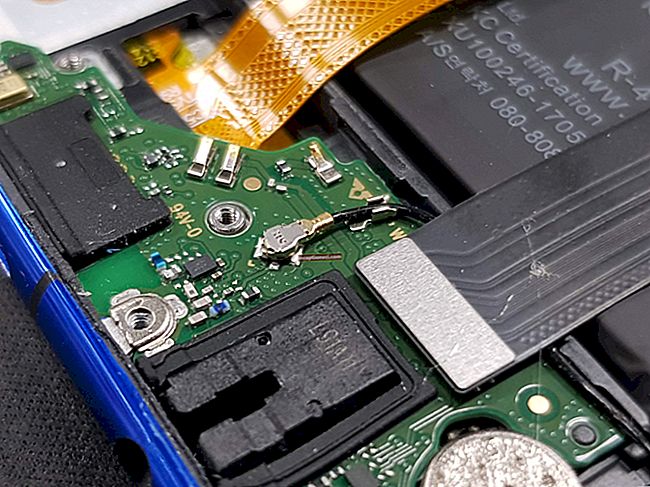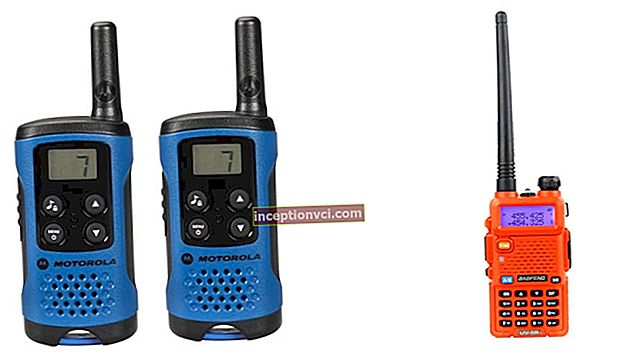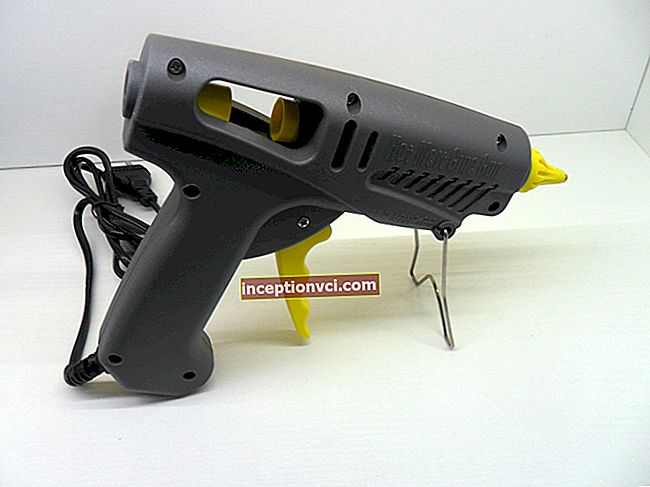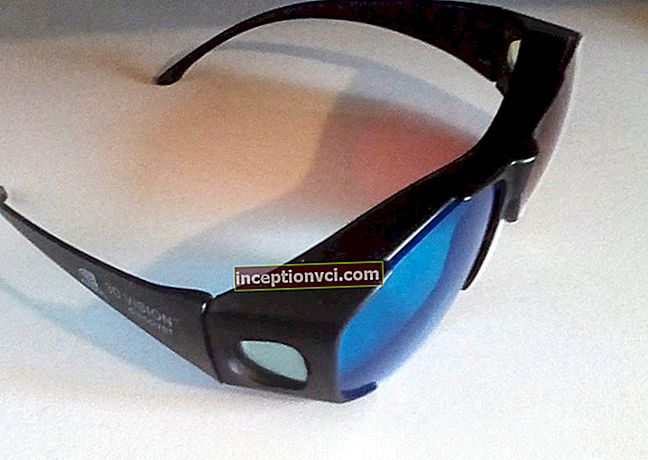Introduction
The matrix, developed specifically for the Pentax K-5 and received many positive reviews (for the optimal ratio of resolution, realistic color reproduction and decent performance at high ISO values), is used quite often. First it was transferred to the K-01 mirrorless camera, now it has found a home on the K-30 DSLR. Apparently, to replace the K-30, it should take a position between the younger brother of the K-r and the upcoming novelty. At the same time, the K-30 was loaded with individual "features" - a rather interesting design, three body colors and an all-weather performance (protection from dust and moisture).
The main competitors are Sony A37.
Construction and design




SLR camera manufacturing is not an area of the digital industry from which to expect global experimentation. Although it was from Pentax, especially in conjunction with the Japanese company Ricoh, it made sense to expect something new, but no, nothing of the kind. Nevertheless, the K-30 looks great: chopped edges, interesting materials (polycarbonate, rubber, leather-like material), dynamic shape. It is a rare case when an SLR camera has a distinct personality. A black camera took part in the testing, but Pentax also has blue and white models in its arsenal (they look very stylish and don't seem like a toy).
As for a mid-range device, it is quite unusual that the K-30 has an all-weather performance. This device is adapted to work at subzero temperatures (up to -10 degrees Celsius, nothing bad should happen to the camera) - a useful feature, especially if you like to travel, so that the camera is positioned as a "traveling" one, which with its overall and weight characteristics is quite logical. By the way, the chassis is made of stainless steel.

Pentax K-30 is a rather large (128.5x96.5x71.5 mm) and heavy (650 grams with memory card and battery) device. In theory, the camera should fit well in the hand - a large protrusion with a recess for the middle finger is covered with a material that imitates the skin, but taking the K-30 in your hand it may seem that the protrusion is too narrow, and the material is not tenacious enough.

Functional elements
On the front panel there is a bayonet mount, a monaural microphone, a lens release button, an infrared port for a synchronizer and an autofocus light.


On the left side is a well-disguised miniUSB connector, a flash raise button, a focus mode switch, and a universal RAW / Fx button. On the right side you can see the connector for the remote control and the slot for the memory card. It is also worth saying that due to the seal (after all, we are talking about a protected camera), the plugs are very difficult to open, but this is a completely justified sacrifice. But the difficulty with taking out a memory card is unlikely to be forgiven, it is very difficult to get close to it with your fingers (in a hurry, you can damage the carrier itself).

Along the edges of the top end are the lugs for the belt, in the center - the "hot shoe" and the flash. Right: shutter release button combined with a switch, mode selector, command dial, exposure compensation input button and proprietary function button (with a green dot in the center).


As usual, there is a battery compartment and a tripod thread on the bottom. Please note that the battery compartment is adapted to work with AA batteries (you need to buy a special adapter for this).
Most of the rear panel is taken up by a 3-inch display. Above it there is a button for activating the "live view" mode (also, it is responsible for deleting pictures), a second navigation dial and a viewfinder. To the right of the display there is a button for viewing pictures, locking focus / exposure, changing the display of information, calling a menu.In its usual place, a navipad is installed, consisting of five navigation keys endowed with additional functions. In the lower right corner, there is a status indicator for recording to a memory card.
The build quality is excellent, the elements fit perfectly together. It makes no sense to check the body for resistance to various influences, you just need to hold the camera in your hands to make sure it is all-weather.
Control and interface




The control scheme, as well as the interface, are borrowed from the K-5 (there are some minor changes). Although, due to the "anatomical" shapes (recesses under the buttons on the upper end), ergonomics has become more efficient. There is no analog switch for autofocus mode (to perform this action, you need to constantly go to the menu). As in the K-5, there is no dedicated button to enable video recording, is it really so tightly packed inside the camera that there is no room left for one button. Perhaps, by this decision, the manufacturer hints to the owner that he bought a camera, not a video camera.







The graphical interface is completely identical to that seen in the K-01, K-5, and even the older K-7. The menu works very quickly, you need to press the Info key to call it. All movements are performed using the navigation dial, the parameters change instantly. All shooting information is displayed on the screen, but it can be turned off and displayed, for example, a virtual horizon. The variety of settings is simply amazing (as with most Pentax cameras). But when compared to the K-5, some limitations can be noticed.
There are no special features in live view mode. There is only one display option - with basic parameters, a focusing sector in the center and a virtual horizon indication along the perimeter. The grid cannot be displayed. Pressing the Info key activates the Quick Menu, and to return to Live View mode, press the corresponding key again.
The optical viewfinder with 100% frame coverage (a rarity for DSLRs in this segment) is no less informative than the “live view” mode. You can't display a grid here either, but there is an electronic level. There is a diopter correction (it is not implemented in the most convenient way - a slider above the viewfinder). Unfortunately, there is no depth-of-field preview.
Functionality
As already mentioned, the matrix is borrowed from the K-5, and this is good news. The 16-megapixel APS-C sensor has proven itself to be the best. Remained the same system of phase detection autofocus SAFOX IX + (11 points, 9 cross sensors), which allows the camera to aim very quickly and accurately. In fact, we see the K-5 redesigned to fit a new chassis.
The burst speed has slightly decreased, now it is equal to 6 frames / second. With files, the camera is very slow, forcing you to wait for each shot to be recorded. You will not be able to achieve a series of more than 5 shots in RAW format from the camera - no matter what kind of card you use, high-speed or regular. Slow processing of the taken pictures is the main scourge of a fast camera, because switching on and focusing is quite nimble. Moreover, a similar problem exists in the new K-01 model. A very strange situation, especially if you remember the incredibly fast operation of the Pentax K-5.
The shutter deserves special attention, it works very loudly and clicks for a long time even at short exposures.
The screen goes from camera to camera without changes: 3 inches, 920 thousand pixels, protected surface. It is crisp and bright enough with realistic colors.

There is a built-in flash (guide number 12). Nothing unusual can be said about her. The Pentax K-30 is equipped with an optical stabilizer. Its work is not satisfactory, but sometimes it is capable of producing artifacts like double contours (which appear when shooting high-contrast subjects).

There are a lot of modes of operation.From the unusual one can distinguish the “TAv” mode, which allows you to manually adjust the exposure setting (shutter speed and aperture), leaving the photosensitivity at the discretion of the automation (a very controversial mode). There is also the "Sv" mode, in which only the sensitivity is manually adjusted, the camera handles all other parameters on its own. There is a separate Bulb free exposure mode, and scene programs that are absent on older models (but necessary for an amateur camera).
Time-lapse modes are of interest as they provide convenient conditions for capturing natural phenomena such as the movement of clouds or the opening of a flower. Interestingly, this function works with video recording as well.
The possibilities for fine-tuning the camera are very wide and pleasant: you can adjust the bracketing order, ISO limits, exposure compensation step, noise suppression level, display of bright / dark zones and much more. There is a software struggle with distortion, compensation for highlights and shadows, but all of them are not very effective.
The camera is able to independently stitch images in HDR mode (the exposure range can be entrusted to automation or adjusted manually). She does it efficiently and fairly quickly.
In place and proprietary software methods of image processing, capable of almost everything: working with color, filters and custom cross-processing. The set of functions has remained unchanged, the implementation is still of high quality. There is also a multiple exposure. Of course, Pentax is the undisputed leader among all mirror systems when it comes to “built-in photoshop” (Sony is in second place). In this regard, the capabilities of the K-30 are no different from those seen in the K-01 and K-5.



With the purchase of an optional GPS module, a very interesting functionality appears in the camera. In particular, the "Astroguide" function allows, in the tracking mode, to take pictures of objects in the starry sky (by tracking the movement of celestial objects depending on the direction of the camera, focal length and location).
Video
Pentax K-30 can shoot video in FullHD format (at 30 frames / second). There is contrast autofocus (its work is not very effective). Most importantly, manual exposure settings have appeared, they have turned this camera into a more versatile device for video shooting. The recording quality is excellent.
Image quality
The mount allows the use of all previously released lenses, including "film" (with or without autofocus). In addition, using special adapters, you can install optics with "unsuitable" types of attachment (for example, with M42 thread). In order for the stabilization system to work correctly with such optics, it needs to "know" the focal length. Therefore, the camera has a section where the focal length value is manually entered (for mechanical models). Pentax has a very interesting and wide range of optics, albeit not as widely known as Canon or Nikon. The device was tested with two lenses: "Pentax SMC DA 17-70mm f / 4 AL (IF) SDM" and "Pentax SMC DA 35mm f / 2.4 AL". Inexpensive optics of a decent level with their own shortcomings. A lens with a focal length of 17-70 mm is not distinguished by outstanding sharpness, and a 35 mm prime gives chromatic aberrations, but they can be successfully "cured" by the correction system built into the camera.
Despite the proprietary algorithms for selecting scenes, you are unlikely to like the automatic mode (Auto Picture) - first of all, this is due to the exposure metering showing a noticeable tendency to underexposure. At the same time, the automatic white balance works well enough, no flaws were noticed. By manually adjusting the Auto ISO range, you can limit the noise level (useful when shooting in a dark environment). In addition, you can shoot in RAW format on the machine. There is even a proprietary technology left - already taken in JPEG pictures, with one click of a button, can be converted into RAW format (if they are still in the buffer).
In terms of detail and color, the K-30 is identical to the K-5 and this should be considered a compliment, because the picture is very good (the best among the cameras in its segment). Despite the good dynamic range, it is difficult to call it a reference (it's good that there are software options for expanding it).
Light sensitivity
The operating sensitivity range is wide enough: up to ISO1600, the noise is not so noticeable, and at ISO3200 you can shoot with noise reduction turned on, but the detail drops (visible only at 100% magnification). For amateur photography, you should not be afraid to use the ISO6400 value, the main thing is to observe the exposure.
Battery
Due to the unusual design of the battery compartment, it only holds a small 1100 mAh battery (B-LI109). The battery lasts for about 400 photos for a DSLR camera, which is quite a bit (although, the battery of the recently released Canon EOS 650D turned out to be even weaker). With an optional adapter (allows using conventional batteries as batteries), the shooting time can be increased. Opinion If the Pentax K-30 came out at the same time as the flagship model K-5, it would look very strange - at the moment, the differences between the two cameras are minimal. In fact, we have before us a more expensive modification of the K-5 model with a redesigned, slower continuous shooting and simplified ergonomics. At the same time, the camera has become a little lighter. The controls of the K-30 have been simplified, but not enough to rank the K-30 in the entry-level DSLR segment. Pentax traditionally does not make a strong discount on the status of a beginner, but at the same time offers detailed software processing of images (first of all, this will interest those who plan to shoot in JPEG format, and not fiddle with RAW) and a huge number of scene modes. In light of the upcoming release of the K-3 and other possible announcements, the Pentax K-30 looks extremely appropriate - this DSLR is designed to extend the life of a well-proven system and move it to a lower segment, thereby making room for a new flagship. Nevertheless, the camera is still expensive for its segment. At the moment, the difference in cost between the K-30 and the K-5 is very small and there is no good reason to buy a new item. At the same time, we must admit that the camera turned out to be excellent, especially if you look at it exclusively from the point of view of the quality of images (in terms of color reproduction, no competitor can compete with this camera). However, for the camera to become really attractive, it will take time - the price will drop slightly, and the K-5 will go out of the way. 









